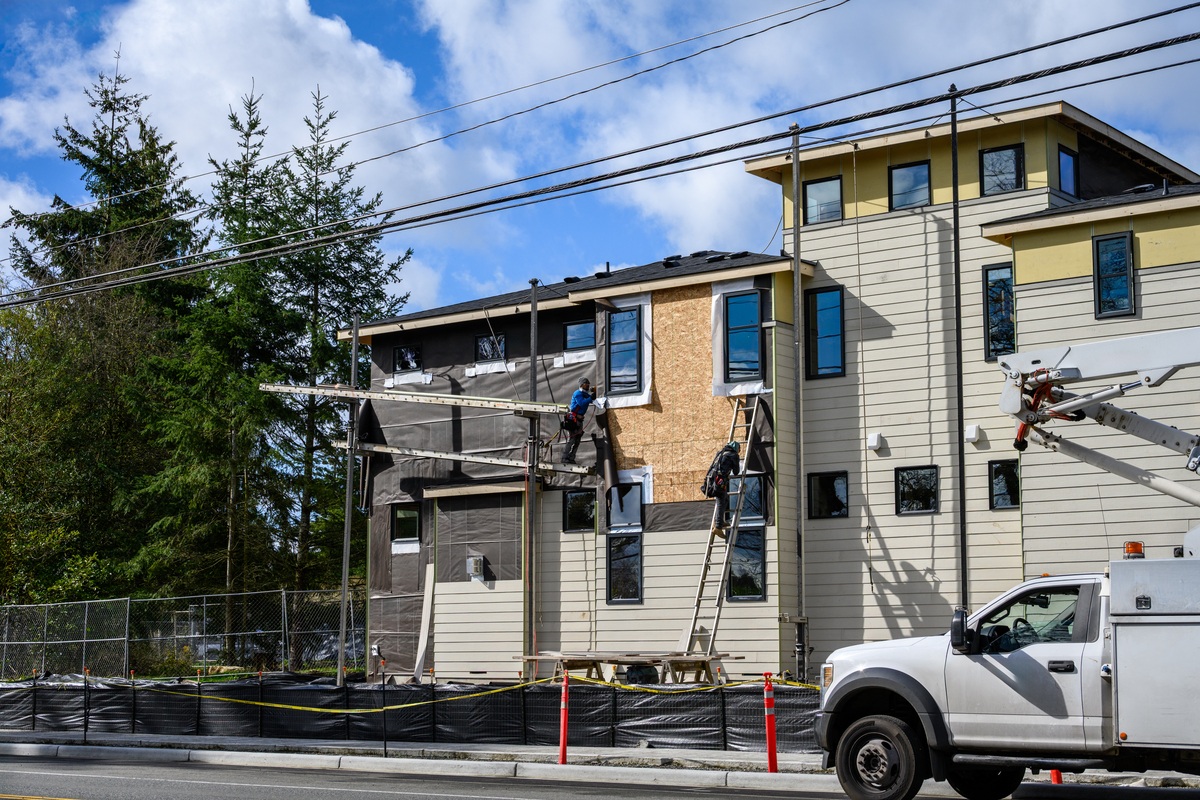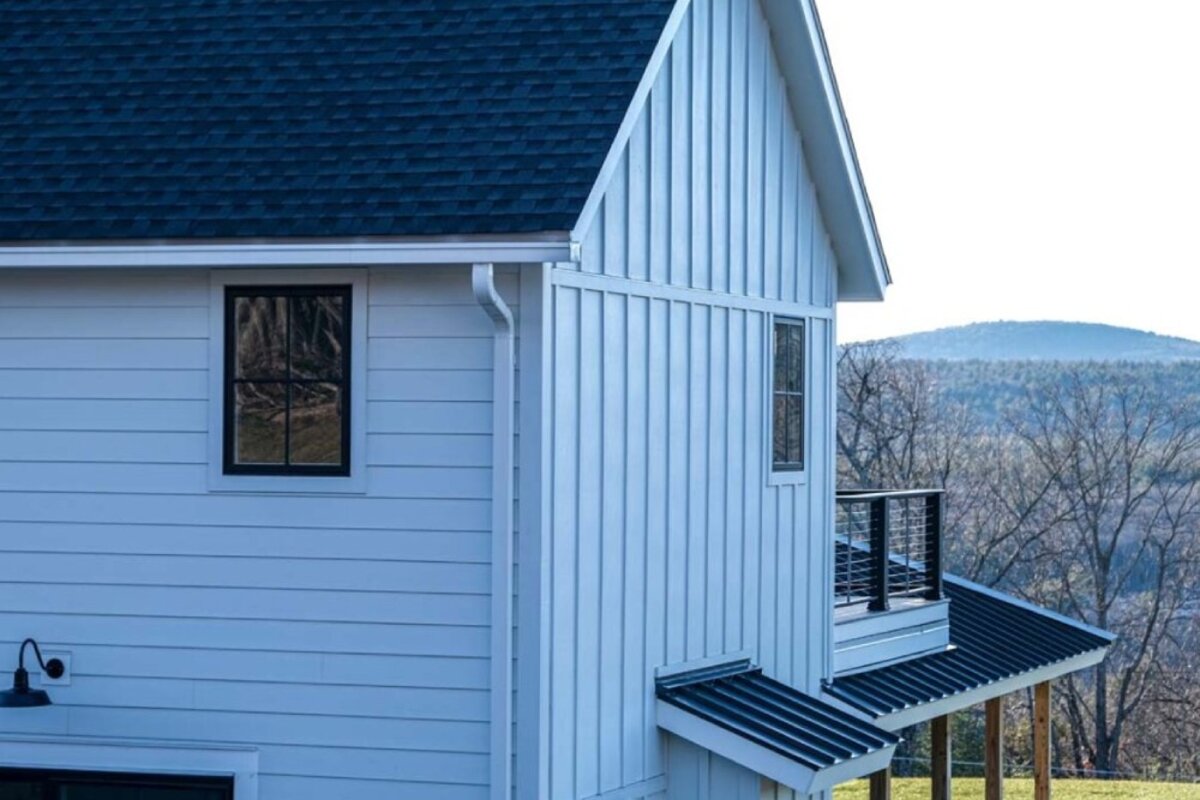Leaks, warped trim, and high energy bills often trace back to poor installation. The right siding installation contractor protects your home, controls costs, and delivers a clean, long-lasting finish. In this guide, we share the same advice we give homeowners across Chicagoland when planning a siding project. Our goal is to help you hire with confidence and avoid costly mistakes.
Why the Right Contractor Matters in Chicagoland
Chicago’s weather is tough on homes. We see freeze and thaw cycles, lake effect wind, summer storms, and heavy rain. Materials must be rated for these swings. Proper flashing, housewrap, and clear water paths are critical. Good siding can fail if the installation is sloppy. A skilled crew follows specs, vents the walls, and seals tricky spots around windows, doors, and trim. That is how you get a tight, durable exterior.
Step 1: Define Your Project Goals
Know the Signs It’s Time to Replace Siding
Look for rot, loose boards, bulges, gaps, or peeling paint that returns fast. Inside the home, check for drafts or stains near exterior walls. Hail hits and woodpecker holes also point to hidden damage.
Pick the Right Material for Chicago Weather
Fiber cement handles heat, cold, and fire. Vinyl can fit tighter budgets. Engineered wood gives a wood look with less upkeep than cedar. Ask about moisture control, thickness, and impact ratings for storms.
Decide on Style and Color
Match the neighborhood but make it yours. Lap, board-and-batten, or shingles can all work. Ask for design renderings and real samples at your home in daylight.
Set a Realistic Budget
Price should include tear-off, disposal, trim, flashing, housewrap, soffit, fascia, and caulking. Plan for repairs to the sheathing if rot appears after the tear-off. Build a small buffer so surprises do not stall the job.
Step 2: Research Local Siding Contractors in Chicagoland
Look for Real Expertise With Fiber Cement
Ask who trains the crew and how often. For James Hardie, request proof of factory training. Confirm they follow the brand’s install guide for spacing, nailing, and clearances.
Check Licenses, Insurance, and Certifications
Verify license status in your city or suburb. Ask for general liability and workers’ comp. Get copies. Make sure the name on the policy matches the company that will do the work.
Read Local Reviews and See Nearby Projects
Drive by recent jobs. Ask for addresses within 10 to 20 miles of your home. Talk to past clients about the schedule, site care, and how the crew handled punch lists.
Step 3: Compare Quotes the Smart Way
What a Professional Estimate Should Include
Line-item scope, exact products, profiles, trim details, and color. Housewrap brand, flashing method, and fasteners. Who handles permits? Start and target finish windows. Cleanup plan, haul-away, and daily magnet sweep for nails. Labor and material warranty terms in writing.
Warning Signs of a Low Quote
Vague scope, missing trim, no mention of housewrap or flashing, or “allowances” with no brand names. Cash-only requests. No local references. Pressure to sign the same day.
Questions to Ask Before You Sign
- Who is on site each day, and who runs the crew
- How will you protect landscaping and windows
- How do you handle weather delays
- What happens if we uncover rot
- Will the siding installation contractor document hidden issues with photos
Step 4: Interview and Evaluate Your Top Picks
Code Knowledge and Permits
Ask how they meet Chicago and suburban codes for wind load, fire rating, and clearances to grade and rooflines. A prepared siding installation contractor can explain the inspection steps in plain terms.
Warranties That Matter
You want both a manufacturer’s warranty and a labor warranty. Ask what voids coverage. Confirm who you call if an issue appears in year three or year eight.
Communication, Schedule, and Site Care
Expect a clear start window, daily arrival time, and a tidy site at day’s end. Good crews protect walkways, use a magnet for nails, and close gates for pets.
Step 5: Prepare for a Smooth Installation
What You Can Do Before the Crew Arrives
Move patio items, trim shrubs near walls, and clear a driveway spot for the dumpster. Plan a safe path for kids and pets.
Permits and Inspections in Chicagoland
Most towns require a permit. Your contractor should pull it, post it, and meet the inspector. Ask for a copy of the final pass report for your records.
What to Expect During Work and Cleanup
Tear-off is noisy. Crews stage materials, install housewrap and flashing, then siding and trim. Daily cleanup keeps the yard safe. A final walkthrough checks details and seals the job.
Why All Star Window & Siding Stands Out
- Factory-trained crews with deep experience in fiber cement
- Clear, line-item proposals and design renderings before work starts
- Strong labor warranty and support after the job
- Careful site protection, daily cleanup, and magnet sweeps
- Local references across the North Shore and the Chicago suburbs
Final Checklist Before You Hire
- License and insurance verified
- Clear scope with brands, profiles, and trim listed
- Housewrap and flashing methods stated
- Permits and inspections handled by the contractor
- Start the window and the cleanup plan in writing
- Labor and material warranties explained
- Three recent local references provided
- Payment schedule tied to milestones, not just dates
Ready to Talk?
If you want a detailed plan, a clean job site, and a finish built for Chicago weather, we are here to help. Reach out for a free inspection and a clear proposal. We will walk you through each choice and make the process simple.






